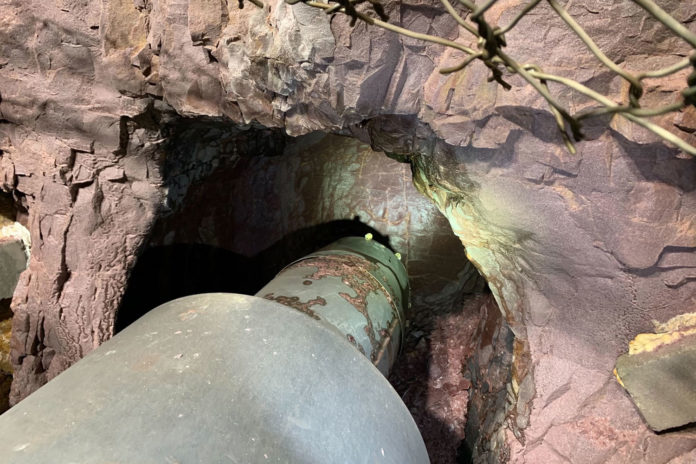Instead of crushing through rock with a massive grinder, a startup called Petra is hoping to dig tunnels using superheated gas. The company recently announced the successful completion of a 20-foot demonstration tunnel through Sioux Quartzite – the hardest rock on earth – at a rate of one inch per minute.
Petra has developed the first non-contact, thermal-drilling method that can uniquely bore 60-inch diameter micro tunnels through hard rock, making it possible to bore utility tunnels through previously impenetrable geologies. Petra’s semi-autonomous non-contact tunneling robot utilizes the thermal drilling method that minimizes surface disruption while promoting efficient drilling.
Powered by machine vision, Petra’s tunneling robot micro-tunnels through the hardest geologies faster and more reliably than conventional methods and can bore through rock, considered too challenging for other tunneling machines.
Petra robotic system is capable of boring a range of diameters between 20-60 inches through any geology. The non-contact thermal drill melts any type of rock by heating a mixture of gas to apply heat above 1,800° Fahrenheit (982° Celcius) that breaks rocks into small pieces.
The technology enables Petra to reduce the costs of tunneling through bedrock to bury electricity and other lines underground by 50 to 80%.
The company says its new tech will make it much more economically viable for governments and utilities to run vital power and communications cables underground, where they are safe from vandalism, wildfires, high winds, and other threats. Petra’s future plans include testing its method outside the laboratory on projects involving various rock types such as granite, dolomite, limestone, and basalt.
Petra also offers the first reverse-tunneling technology, making possible machine maintenance and cutter head rescue. The company is enabling customers to rapidly bury critical utilities for a fraction of the cost of legacy techniques, which includes construction services, tunnel development, and ongoing maintenance.
